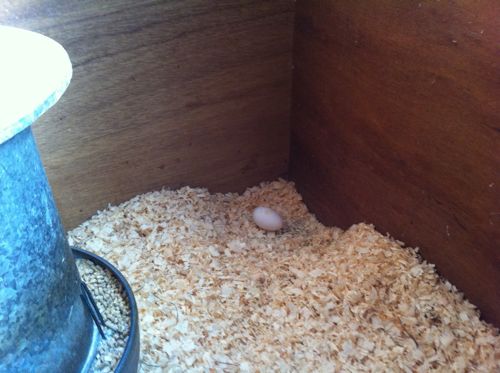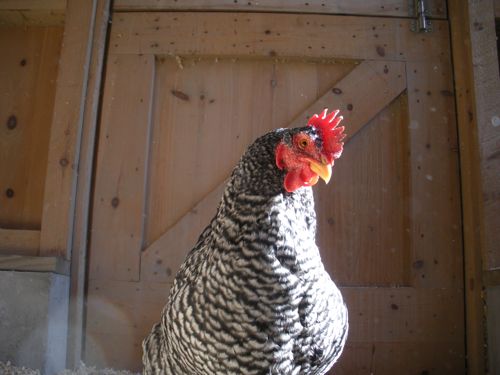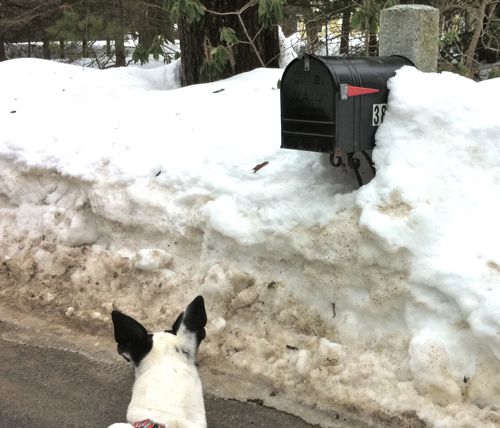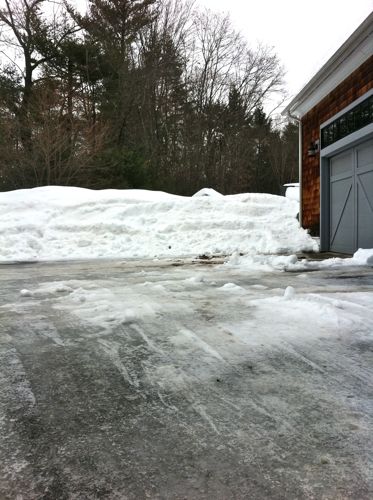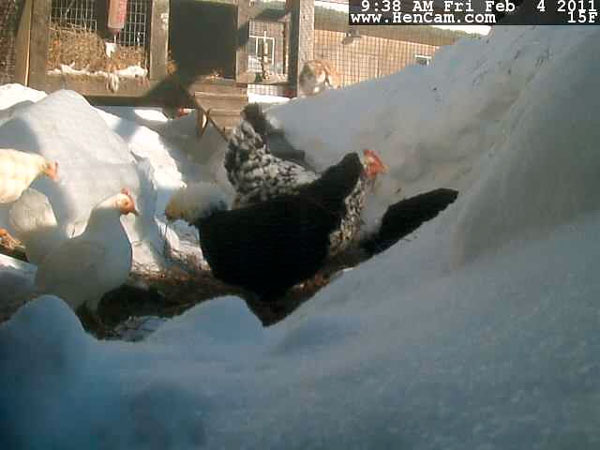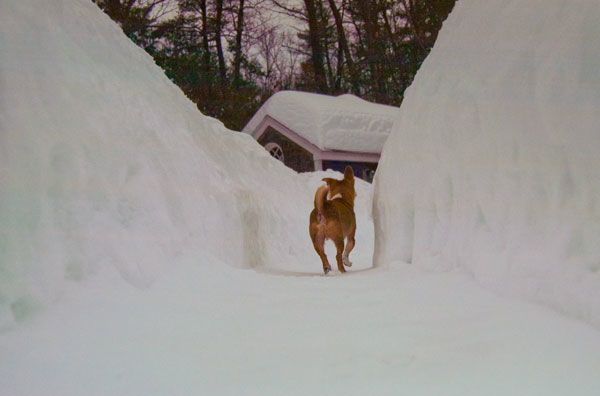There have been days this winter when the sky was the color of dirty socks. There have been many days when the chickens have been coop-bound, holed up, indoors, with nothing but some pine bedding to unenthusiastically scratch in. Today, thankfully, the sun glares on the ice crusted on the snow. I squint when I go outside. The chickens in the HenCam coop stand desultorily around in the sun for awhile,but it’s cold and a bit windy, so they spend most of their time inside, peering out the pop door. The girls in the big barn can’t go out at all. Their door is frozen shut and there’s no way to shovel the two feet of solid snow (what I imagine igloo walls are made from) on the other side.
These indoor days are part of winter in New England and I planned for them when designing the coops. A priority was to have windows. Sunlight is an essential element to keeping your chickens healthy, happy and laying. A hundred years ago it was understood that coops needed to be as light as possible. The book Productive Poultry Husbandry, published in 1913, has this to say, “Sunlight should penetrate every part of the house as much of the day as possible. Sunlight is the perfect germ destroyer, purifying the parts of the house where it shines, besides adding warmth and making surroundings more congenial. It acts as a tonic to the birds during the short winter days and induces a heavier production.” So, why are so many of the prefab coops on the market so dark? I’ve seen coops disguised as garbage cans, others that look like space ships, some that look like dog houses. They’ll do in climates where chickens are out and about every day. They are not the right choice for places that have seasons of heavy rain and snowfall.
Also, those coops are too small! Chickens that are stuck indoors need floor space and roosts. I’m sure I’ll hear from people who have small box coops and they’ll tell me their chickens are fine. Chickens can survive lots of conditions, and with attentive care, they’ll be okay. But, if you’re planning on getting chicks this spring, please get a coop that lets light in and that provides a minimum of four square feet per hen of indoor floor space (nesting boxes don’t count.)
Having a sunny coop will encourage late-winter egg laying. Look what I found today from one of my Polish hens! (I won’t even complain about it being left on the floor.)
When your chickens are old and arthritic, like Edwina, here, they’ll thank you for giving them warm pools of sunlight to bask in. It looks nice, doesn’t it? I think I’d like to join her.
